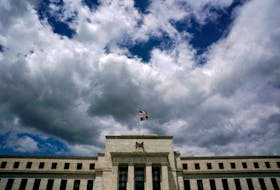The Royal LePage House Price Survey and Market Survey Forecast released this week showed little change in year-over-year prices for all housing types surveyed in Charlottetown.
The average price of a detached bungalow in Charlottetown rose slightly year-over-year, inching up 1.2 per cent to $175,000. Standard condominiums also experienced a modest increase, rising 1.6 per cent to $130,000. Standard two-storey home average prices were flat, remaining at $205,000.
“A decrease in activity has kept prices fairly level across all housing types,” said Ken Peters, president of Royal LePage Peters and Lank Realty Inc.
“The amount of inventory available is high and demand has not picked up to meet the increased supply on the market. When put together these two factors have created a buyers’ market in Charlottetown.”
According to Peters, there was a small increase in unit sales for condominiums, which can be attributed to the addition of a number of new developments to the housing supply.
Peters forecast softer home prices for the remainder of 2014. “With the current strong inventory levels, buyers will have their pick of homes and won’t be pressured into paying higher prices. The pent-up demand that we had anticipated after our rough winter has also been slow to materialize, although we’re still optimistic for the summer and fall season,” commented Peters.
Nationally, with the harsh winter now a fading memory, the average price of a home in Canada increased between 3.9 and 5.2 per cent in the second quarter of 2014. According to Royal LePage, price increases were posted across housing types, with detached bungalows seeing the highest year-over-year gains, rising 5.2 per cent to an average price of $406,454. Meanwhile, standard two-storey homes rose 5.1 per cent year-over-year to $440,972, while standard condominiums posted gains of 3.9 per cent to $258,501.
“Chronic supply shortages are driving price spikes in Canada’s major cities, masking otherwise moderate home price appreciation nationally,” said Phil Soper, president and chief executive of Royal LePage. “While a widening affordability gap in Canada’s largest urban centres is characterizing the national market Canadians read about daily, year-over-year house price increases in most regions of the country are presently tracking below the historical average.”
Looking ahead at the remainder of 2014, Royal LePage is projecting that the national average house price will increase at 5.1% per cent for the full-year.
“Compared to other major forecasts, our year-beginning national outlook predicted a higher level of 2014 average price appreciation, yet supply constraints in a handful of our largest cities necessitate a revision upwards,” noted Soper. “Looking ahead to 2015, we expect house prices to track more closely to the rate of general economic growth. That is, we see price increases in Canada’s largest cities moderating, just as our smaller city markets should see a lift.”
The Royal LePage House Price Survey and Market Survey Forecast released this week showed little change in year-over-year prices for all housing types surveyed in Charlottetown.
The average price of a detached bungalow in Charlottetown rose slightly year-over-year, inching up 1.2 per cent to $175,000. Standard condominiums also experienced a modest increase, rising 1.6 per cent to $130,000. Standard two-storey home average prices were flat, remaining at $205,000.
“A decrease in activity has kept prices fairly level across all housing types,” said Ken Peters, president of Royal LePage Peters and Lank Realty Inc.
“The amount of inventory available is high and demand has not picked up to meet the increased supply on the market. When put together these two factors have created a buyers’ market in Charlottetown.”
According to Peters, there was a small increase in unit sales for condominiums, which can be attributed to the addition of a number of new developments to the housing supply.
Peters forecast softer home prices for the remainder of 2014. “With the current strong inventory levels, buyers will have their pick of homes and won’t be pressured into paying higher prices. The pent-up demand that we had anticipated after our rough winter has also been slow to materialize, although we’re still optimistic for the summer and fall season,” commented Peters.
Nationally, with the harsh winter now a fading memory, the average price of a home in Canada increased between 3.9 and 5.2 per cent in the second quarter of 2014. According to Royal LePage, price increases were posted across housing types, with detached bungalows seeing the highest year-over-year gains, rising 5.2 per cent to an average price of $406,454. Meanwhile, standard two-storey homes rose 5.1 per cent year-over-year to $440,972, while standard condominiums posted gains of 3.9 per cent to $258,501.
“Chronic supply shortages are driving price spikes in Canada’s major cities, masking otherwise moderate home price appreciation nationally,” said Phil Soper, president and chief executive of Royal LePage. “While a widening affordability gap in Canada’s largest urban centres is characterizing the national market Canadians read about daily, year-over-year house price increases in most regions of the country are presently tracking below the historical average.”
Looking ahead at the remainder of 2014, Royal LePage is projecting that the national average house price will increase at 5.1% per cent for the full-year.
“Compared to other major forecasts, our year-beginning national outlook predicted a higher level of 2014 average price appreciation, yet supply constraints in a handful of our largest cities necessitate a revision upwards,” noted Soper. “Looking ahead to 2015, we expect house prices to track more closely to the rate of general economic growth. That is, we see price increases in Canada’s largest cities moderating, just as our smaller city markets should see a lift.”









